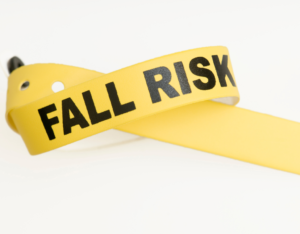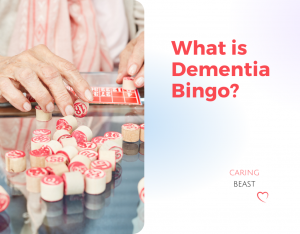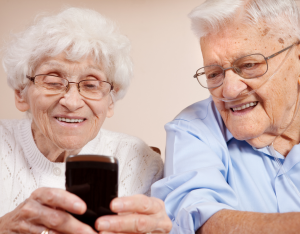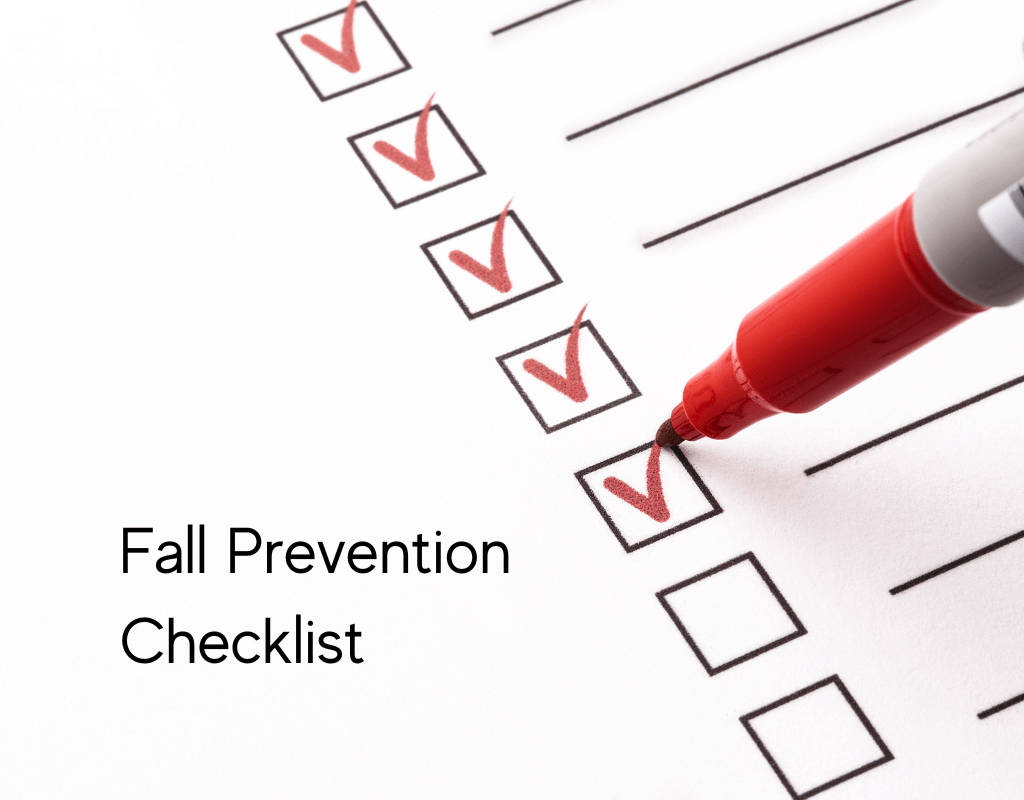As we age, maintaining our balance and mobility becomes increasingly challenging. Falls can lead to serious injuries and a significant loss of independence. However, many falls are preventable with the right precautions. This article provides essential tips and a downloadable fall prevention checklist for seniors so they can stay safe and secure in their homes.
Why Fall Prevention Matters
Falls are the leading cause of injury among older adults, resulting in fractures, hospitalizations, and even fatalities. Every second of each day, an older adult (age 65+) suffers a fall in the U.S., according to the Centers for Disease Control (CDC), making it the leading cause of injury and injury-related deaths in this age group.
People who are over the age of 75 are four to five times more likely than those age 65 to 74 to be admitted to a long-term care facility for a year or longer. And, the death rates from falls of older men and women has sharply risen over the past decade.
By taking proactive steps to prevent falls, seniors can maintain their independence and enhance their quality of life.
Fall Prevention Tip #1 – Create a Safe Environment
Creating a safe environment is your first line of defense against falls. It’s not just about aesthetic or convenience; it’s also about safety. Let’s talk about a few key changes you can make to your home to reduce the risk of falls.
Keep your home clutter-free
First, it’s crucial to eliminate tripping hazards. Things like loose rugs, excess electrical cords, or general clutter are not just eyesores – they’re accidents waiting to happen. By ensuring pathways are clear and well-lit, you can navigate your home with confidence. Use a fall prevention checklist to make sure you’re covering all areas of your home.
Install Safety Features
If you’re thinking about long-term changes, home safety modifications can be a smart investment. Reinforcing stair railings or installing a zero-threshold shower can not only improve safety but can also enhance the value of your home.
Bathroom safety is an essential aspect to consider since the majority of falls happen here. Use grab bars in the bathroom, especially near the toilet and shower. Shower chairs are also essential to avoid falls while in the bathtub or shower. Install handrails on both sides of staircases and ensure adequate lighting in all areas of the home, including night lights in hallways and bathrooms.
Remember, you can always adjust your approach down the road. As your needs change, so might your home setup. Ongoing evaluation of your living space is key to ensuring it remains a safe haven.
Fall Prevention Tip #2 – Lifestyle Adjustments
Stay physically active
Improving your balance and coordination is like keeping your body in tune. Engage in regular exercise to improve strength, balance, and coordination. Consider activities like walking, tai chi, or water aerobics. Always consult with your doctor before starting any new exercise regimen.
Manage your medications wisely
Medications can be a double-edged sword. While they’re crucial for managing health conditions, some can increase the risk of falls due to side effects like dizziness or drowsiness. That’s why it’s important to have regular chats with your healthcare provider about the meds you’re on, to ensure they’re the right fit for you.
Get regular health checkups
Your eyes and ears are your guiding stars for balance. Regular check-ups should be non-negotiable because changes in vision or hearing can sneak up on you and may not be as obvious as you’d think. And don’t forget chronic conditions like diabetes or arthritis. These need ongoing attention as they can affect your mobility in unexpected ways.
Use assistive devices
Consider using canes, walkers, or other assistive devices to help with balance and stability. Ensure these devices are properly fitted and in good condition.
Stay Hydrated
Avoiding dehydration is crucial since it can lead to disorientation or fainting. So, keep that water bottle handy and sip throughout the day. The National Academy of Medicine suggests an adequate intake of daily fluids of about 13 cups for men and 9 cups for women aged 51 and older.
It’s all about making smart, daily choices. The occasional adjustments are worth it. By doing so, you create a solid foundation that not only reduces your risk of falling but also enriches your overall quality of life.
Fall Prevention Tip #3 – Educate Yourself
A lot is happening very quickly in the world of fall prevention. There are workshops, classes, and even online resources that can keep you up to date. Check with your local senior center and ask about Fall Prevention or Balance classes. Also, sharing what you’ve learned with friends and family is crucial; after all, fall prevention is a collective effort.
Fall Alert Systems
I would also recommend that you research fall alert systems which can notify caregivers or family members in the event that someone does fall. My guide to senior fall alert systems will provide more information on the system that’s right for you.
Download Your Fall Prevention Checklist
To make it easier for you to implement these tips, I’ve created a comprehensive fall prevention checklist. This handy guide will help you address potential hazards in your home and lifestyle.
will help you address potential hazards in your home and lifestyle.
Download Your Fall Prevention Checklist Here
By following these tips and utilizing my fall prevention checklist, seniors can significantly reduce their risk of falls and enjoy a safer, more independent life. Remember, taking proactive steps today can prevent a serious injury tomorrow. Stay safe and stay strong!
Here’s a little transparency: Our website contains affiliate links. This means if you click and make a purchase, we may receive a small commission. Don’t worry, there’s no extra cost to you. It’s a simple way you can support our mission to bring you quality content.
Recommended For You

Senior Fall Prevention Checklist – Download For Free!
Every year, millions of older adults fall at home and falls are the leading cause of injury-related emergency department visits, hospitalizations and deaths. In this

What is Dementia Bingo?
Bingo is a popular and fun activity for many people but it can be extremely overwhelming for someone with dementia or Alzheimer’s. Fortunately, there is a simplified version of this …

What is the Senior Texting Code?
As more and more seniors are texting these days, we thought it would be good to answer everyone’s question…what is the senior texting code? So, we compiled a list! Bathroom …

Characteristics of a Good Caregiver – The Top 6
What are the characteristics of a good caregiver? Whether you are hiring a private caregiver or one through an in-home care agency, you want to

Home Care Plan Template
What is a Home Care Plan? A care plan is a document that professional caregivers and care providers use to make sure that their clients

Kitchen Tools for Seniors & Disabled – Must Haves
My mother, Barbara, had progressive MS for most of her adult life. Complications from MS, along with a stroke, left her unable to do many


